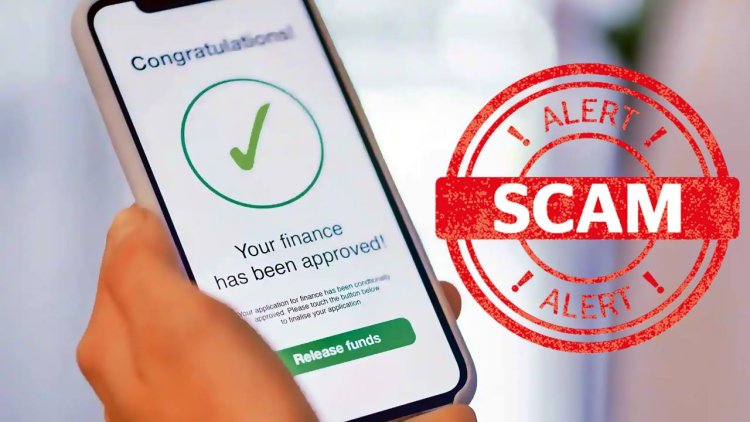The Dark Reality of Fake Loan Applications ; Staying Safe in the Online Lending World

In the era of rapid technological advancements, accessing financial services has never been easier. Online lending platforms have become increasingly popular due to their convenience and accessibility. However, with every opportunity comes a risk, and the rise of fake loan applications has become a cause for concern in the financial world. In this blog, we will explore the dangers of fake loan applications and provide valuable tips on how to stay safe in the online lending landscape.

The Growing Prevalence of Fake Loan Applications
Fake loan applications are deceptive schemes designed to exploit borrowers by promising quick and easy loans with minimal documentation. These fraudulent entities use sophisticated techniques to mimic legitimate lenders, making it challenging for borrowers to differentiate between genuine and fake loan offers.
How Do Fake Loan Applications Work?
-
Phishing Websites: Fraudsters create fake websites that closely resemble legitimate lending platforms. They lure unsuspecting borrowers to provide personal and financial information, which they use for identity theft or other illicit activities.
-
Upfront Fees: Fake lenders may demand upfront processing fees or collateral payments, claiming it is a standard procedure. Once the payment is made, they disappear, leaving the borrower with significant financial losses.
-
Loan Flipping: In this scam, borrowers who are in desperate need of funds are offered a loan but at exorbitant interest rates and hidden fees. As the borrower struggles to repay the loan, the fraudulent lender continually refinances the debt, trapping the borrower in a never-ending cycle of debt.
-
Identity Theft: Some fake lenders may not intend to offer any loans at all. Instead, they use the information provided by applicants to steal their identities, potentially leading to severe consequences for the victims.

Tips to Spot and Avoid Fake Loan Applications
-
Research Thoroughly: Before applying for any loan online, conduct thorough research on the lender's reputation. Check online reviews, testimonials, and ratings from trusted sources to ensure their legitimacy.
-
Verify Website Security: Ensure that the lender's website has a secure connection. Look for "https://" in the URL and a padlock icon in the address bar. This indicates that the website uses encryption to protect your data.
-
Beware of Upfront Fees: Legitimate lenders typically deduct processing fees from the loan amount rather than asking for upfront payments. Avoid lenders who demand payment before disbursing the loan.
-
Check Licensing and Credentials: Genuine lenders must be registered and licensed to operate in their respective jurisdictions. Verify the lender's credentials with the relevant regulatory authorities.
-
Avoid Unsolicited Offers: Be cautious of unsolicited loan offers through emails, text messages, or social media. Reputable lenders rarely approach borrowers in such manners.
-
Don't Share Personal Information Unsafely: Avoid sharing sensitive information, such as Social Security numbers or bank account details, through insecure channels like email or social media.
-
Review Loan Terms Carefully: Read the loan agreement thoroughly, and don't hesitate to ask questions if something seems unclear or suspicious.
While online lending offers immense convenience, it also opens the door to potential fraud through fake loan applications. Staying cautious and informed is the key to safeguarding yourself from falling victim to such scams. Always remember to verify the lender's legitimacy, review loan terms carefully, and never share sensitive information without ensuring the recipient's authenticity. By being vigilant and aware, you can protect yourself from the dark reality of fake loan applications and navigate the online lending world safely.















